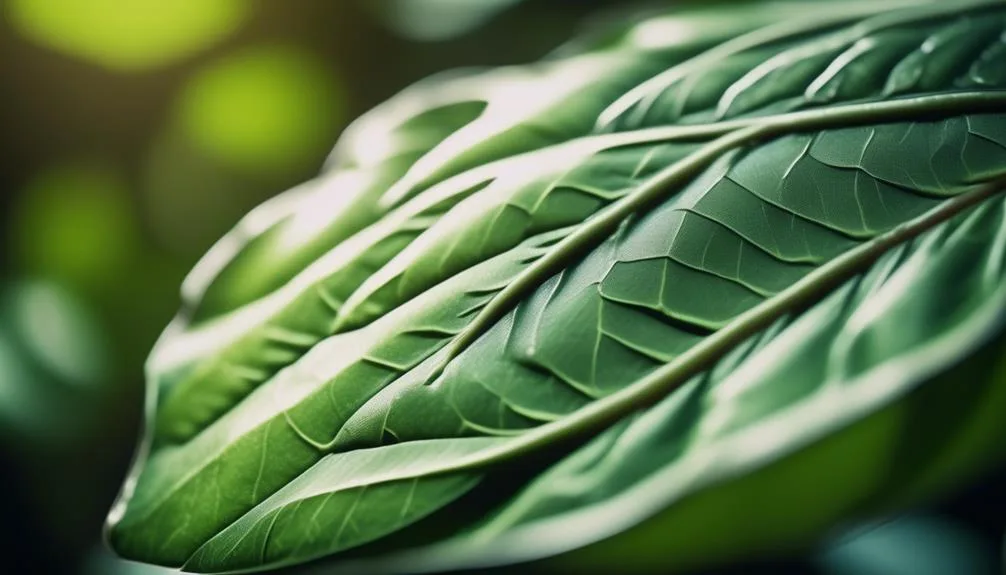Magnolia trees have thick leaves for a reason. These sturdy leaves are a result of the tree's amazing ability to adapt to its surroundings. Understanding the purpose of these thick leaves sheds light on the resilience of magnolia trees.
Let's explore the fascinating reasons behind this feature and gain a deeper insight into what makes these trees so remarkable.
Adaptation to Harsh Environments
Magnolia trees have developed thick leaves to thrive in harsh environments, providing them with protection from extreme weather and environmental conditions. The leaf structure of magnolia trees plays a vital role in their climate adaptation.
The thickness of their leaves helps reduce water loss, allowing the trees to withstand dry and hot conditions. Additionally, the waxy coating on the leaves minimizes water evaporation and protects them from harsh winds.
This adaptation enables magnolia trees to not only survive but also flourish in diverse climates, from hot and arid regions to humid and tropical areas.
The unique leaf structure of magnolia trees showcases nature's remarkable ability to adapt to challenging environments, ensuring their continued existence and contribution to the beauty of various landscapes.
Protection From Environmental Stress
Developing a robust defense mechanism against environmental stress, magnolia trees have evolved a remarkable ability to withstand harsh weather conditions and thrive in diverse landscapes. This is primarily due to their unique leaf structure, which plays a crucial role in protecting them from various environmental factors.
The thick, waxy coating on the leaves helps reduce water loss, allowing the tree to conserve moisture during dry spells. Additionally, the dense nature of magnolia leaves acts as a barrier, shielding the tree from strong winds and extreme temperatures. The leathery texture of the leaves also deters herbivores and pests, providing an added layer of protection.
Furthermore, the deep green color of the leaves enhances photosynthesis efficiency, ensuring the tree can continue to thrive even in challenging environmental conditions.
Natural Defense Mechanism
With its natural defense mechanism, the magnolia tree demonstrates a remarkable ability to protect itself from environmental stressors, ensuring its survival in diverse landscapes.
The leaf structure of magnolia trees plays a pivotal role in their defense mechanism. The thick, waxy nature of their leaves acts as a barrier, reducing water loss and providing protection against harsh environmental conditions.
Additionally, the tough texture and bitter taste of magnolia leaves serve as a predation avoidance strategy, deterring herbivores and insects from feeding on them.
This natural defense mechanism allows magnolia trees to thrive in various habitats, safeguarding them against potential threats and contributing to their resilience in the face of environmental challenges.
Through their adaptive leaf structure and predation avoidance tactics, magnolia trees exemplify nature's ingenuity in ensuring their survival.
Efficient Water and Nutrient Retention
Amidst the magnolia tree's impressive natural defense mechanism, its leaf structure also facilitates efficient water and nutrient retention, showcasing the tree's remarkable adaptability to diverse environments.
The glossy, waxy surface of the leaves minimizes water loss through evaporation, while the thick, leathery texture reduces transpiration. Furthermore, the densely packed cells within the leaves enable efficient nutrient uptake and storage, ensuring the tree's vitality even in challenging conditions.
The deep-reaching root system of the magnolia tree complements its leaf structure by absorbing and retaining water, providing a steady supply for the tree's growth and development.
Together, these characteristics allow the magnolia tree to thrive in various climates, making it a resilient and enduring presence in landscapes around the world.
Evolutionary Advantage
The magnolia tree's leaf structure provides it with an evolutionary advantage by enabling efficient water and nutrient retention, allowing the tree to thrive in diverse environments.
The thick, waxy coating on the leaves reduces water loss through transpiration, a process crucial for conserving water in arid conditions. Additionally, the robust nature of the leaves protects them from damage, ensuring sustained photosynthesis efficiency. This advantage has allowed magnolia trees to adapt and flourish in various habitats, from moist forests to drier climates.
Moreover, the ability to retain nutrients within the leaves for extended periods supports the tree's growth and resilience. As a result, the evolutionary adaptation of thick leaves has contributed significantly to the magnolia tree's success in a wide range of ecological niches.
Conclusion
In nature's intricate web, magnolia trees' thick leaves stand as a resilient shield against environmental stress, aiding in water and nutrient retention.
Their evolutionary advantage highlights the brilliance of natural design, offering a glimpse into the remarkable adaptations that enable survival in challenging landscapes.

My interest in trees started when I first saw the giant sequoias in Yosemite.
I was a teenager then, and I remember thinking, “I need to learn more about this.”
That moment stuck with me.
A few years later, I went on to study forestry at Michigan Tech.
Since graduating, I’ve worked in a mix of hands-on tree care and community education.
I’ve spent over ten years helping people understand how to plant, maintain, and protect the trees in their neighborhoods.
I don’t see trees as just part of the landscape.
They are living things that make a real difference in our daily lives.
